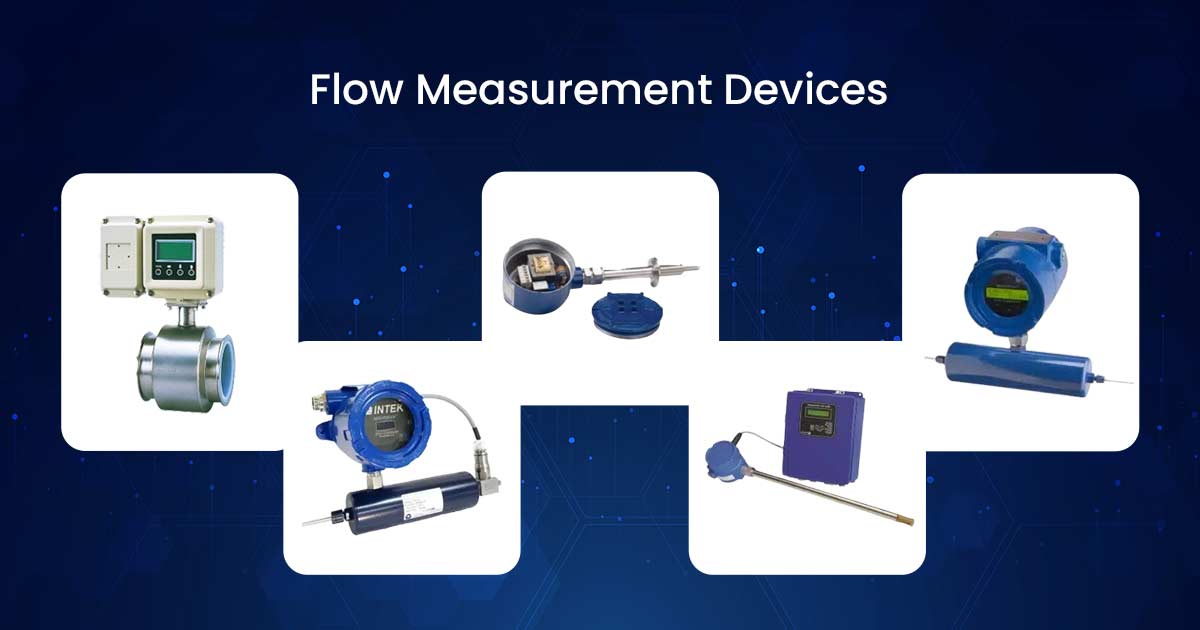Understanding Flow Measurement Devices: Essential Tools for Industry

For most industries, managing the flow of liquids and gases is a challenge. From costly production delays to regulatory compliance issues to safety hazards, businesses have to go through several issues when they are unable to accurately measure flow. When I think of those manufacturing plants where the wrong amount of material is used, my heart aches. It is because this results in wasted resources and increased costs.
Scenarios like this underscore the critical need for reliable flow measurement devices. These tools help businesses to operate and run smoothly and also ensure safety and compliance. So, if you are not sure about how useful these tools are, this guide is for you. I will discuss everything you should know to make it easy for you to understand measurement devices.
What Are Flow Measurement Devices?
These devices are the instruments that make it easy for you to measure how much liquid or gas is moving through a system. You can expect them to –
- Provide essential data that helps industries keep track of their processes
- Maintain quality, and
- Comply with safety regulations
The devices can be electronic or mechanical, or a mix of both. The measurement devices come in different shapes and sizes that can fit all your needs and preferences.
Exploring the Types of Flow Measurement Devices
Let me now take you through the world of measurement devices.
Mechanical Flow Meters
These are the traditional devices that use moving parts to measure the flow. Some of the most common types are as follows:
- Positive Displacement Meters – These positive displacement meters work by capturing a specific volume of fluid and counting how many times that volume is filled and emptied.
- Turbine Meters – These meters have a spinning turbine inside that moves in a circular position as fluid flows through it. To know how fast the fluid is moving, just focus on the speed of the turbine.
Electronic Flow Meters
The electronic flow meters are more accurate than mechanical meters. These devices use electronic sensors to measure flow. Some examples include:
- Electromagnetic Flow Meters – These measure the flow of conductive liquids using magnetic fields.
- Ultrasonic Flow Meters – These use sound waves to measure flow, making them versatile for many applications.
Mass Flow Meters
Unlike other meters that measure volume, mass flow meters measure the actual mass of the fluid. This is especially useful in industries like oil and gas, where the density of the fluid can change.
Vortex Flow Meters
These devices measure flow by detecting the swirling vortices created when a fluid flows past an obstacle. They are reliable and often used for gases and steam.
Applications of Flow Measurement Devices
Water and Wastewater Treatment
Accurate and appropriate flow measurement is crucial for managing water resources and ensuring compliance with environmental laws. With this monitoring, one can optimize the treatment process and prevent overflows or contamination.
Oil and Gas
Flow measurement devices even monitor the extraction and transportation of oil and gas, helping to keep operations safe and efficient. Using this kind of device, you can detect leaks early and prevent the risk of costly environmental damage.
Pharmaceuticals
The importance of these devices in pharmaceuticals cannot be overstated. It is necessary to do precise flow measurement for producing high-quality medicines. On the other hand, consistent flow rates are crucial for preserving the integrity and effectiveness of pharmaceutical products.
Food and Beverage
Flow measurement devices ensure that ingredients are mixed correctly, maintaining product quality and safety. This accuracy is vital for meeting consumer expectations and regulatory standards.
Chemical Processing
In chemical manufacturing, product quality is of utmost importance. A flow measurement device helps in controlling reactions and ensuring product quality. It will help to avoid unwanted reactions and maintain safety in the production process.
HVAC Systems
In heating, ventilation, and air conditioning (HVAC) systems, flow measurement devices help regulate airflow and maintain indoor air quality. This regulation is important for energy efficiency and occupant comfort.
Why is a Flow Measurement Device Important?
Operational Efficiency
Businesses can easily optimize their processes, reduce waste, and improve productivity by accurately measuring flow. This helps them to identify and fix any issues in their operations.
Safety
One of the most important things this device offers is safety. All those industries that work with or handle hazardous materials can avoid spills and leaks, protecting both workers and the environment.
Regulatory Compliance
All industries must follow strict regulations regarding emissions and waste management. These measurement devices provide the necessary data to show compliance with these rules.
Cost Savings
By improving efficiency and reducing waste, flow measurement devices can lead to significant cost savings over time. Accurate measurements help businesses avoid overusing resources and minimize operational costs.
Future Trends in Flow Measurement
No one can deny the fact that the technology is getting better now, and as the technology advances, the furniture of these measurement devices looks bright. Innovations like Internet of Things (IoT) integration, smart sensors, along with advanced data analytics, are sure to improve this device even more.
What I think is that these advancements will not only work well for improving accuracy but will even help with real-time monitoring and predictive maintenance. So, here I conclude that the future of flow measurement devices looks great, ready to improve industrial processes and boost efficiency. By using these new technologies, businesses can succeed in a changing world!











